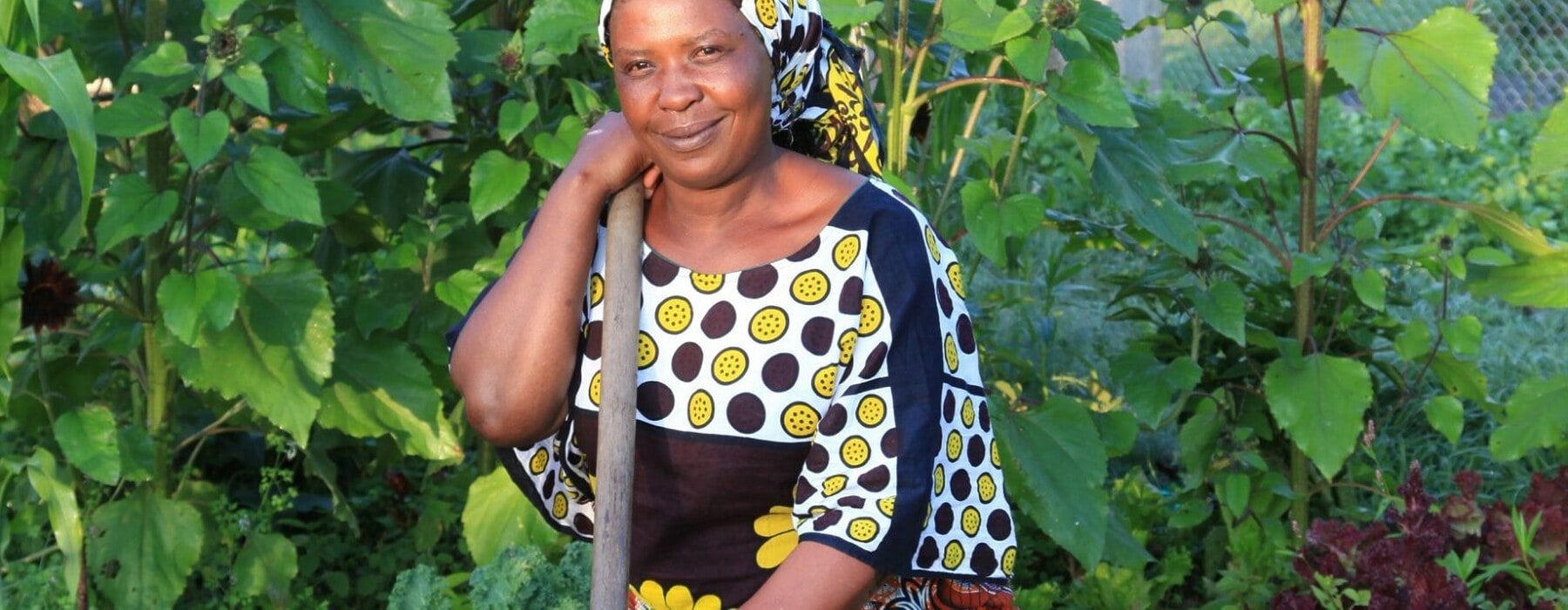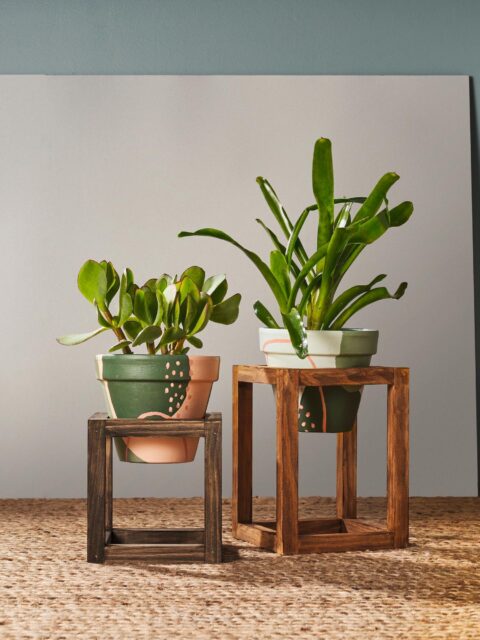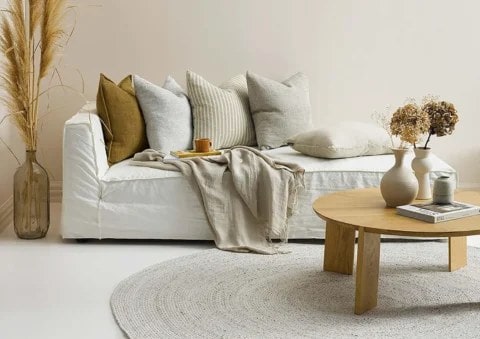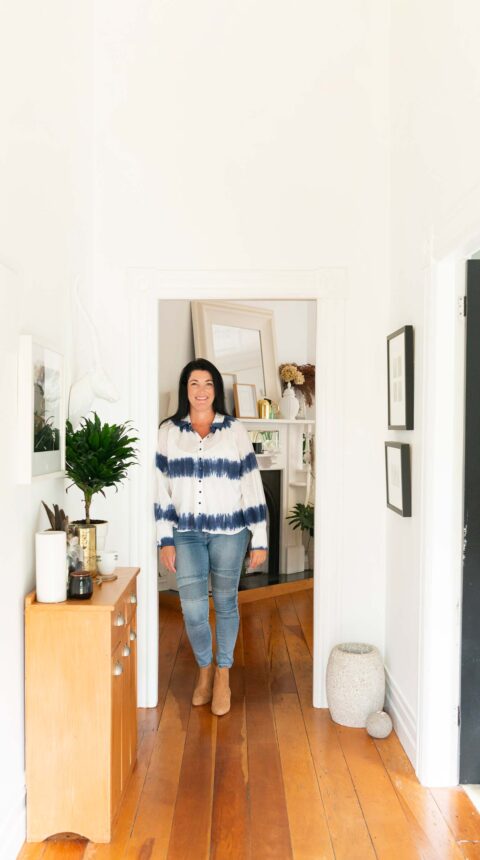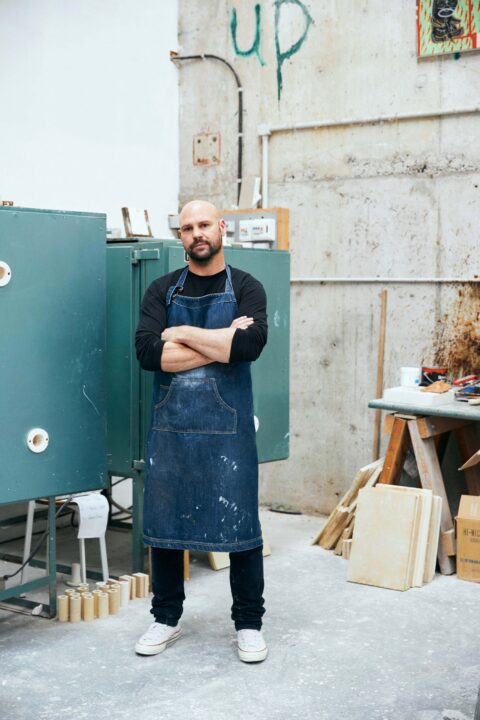At a community garden in West Auckland, food, friendship and whānau have stood the test of time for the past 20 years.
It’s a sunny autumn morning, and tucked down the end of a cul-de-sac in the West Auckland suburb of Rānui, the pumpkins at the community garden are almost ready to harvest. These aren’t your run-of-the-mill supermarket-variety pumpkins either. With chunky hourglass figures and orange stripes, you’d think they all had the same pumpkin parents. But they’re actually different, explain garden coordinator Lema Shamamba and plot-holder Ganga Prasad. One type of pumpkin hails from Lema’s former home in the Democratic Republic of Congo (DRC), while its doppelganger, the seed of which Ganga acquired from the Hindu temple down the road, is from Fiji.
Lema says that sharing knowledge of important cultural foods and comparing differences and similarities is one of the joys of gardening in this collaborative space. “We grow some of the same types of food but the way that we prepare it is different. We share every time though.”
This generosity with seeds, produce and plants provides opportunities for gardeners to have a go at growing vegetables they’ve never tried or are difficult to source, Lema explains. “This year, it’s my first time growing lauki,” she says, pointing to a vine-covered structure sporting pretty star-shaped white flowers that are gradually growing into the bottle gourds prized in Fijian Indian cuisine. “I was inspired by Ganga to grow them after he gave me some seeds.”
Building neighbourhood connections and providing access to cheap, healthy food was what inspired Rānui resident Melody Shinnick to establish this garden back in 2002. “I’m not a super gardener,” she says, “but after visiting a community garden in Grey Lynn, I thought, ‘I can do that.’”
She put up posters in the local shops inviting Rānui residents to a meeting to gauge public interest, and found a piece of land – a grassy reserve with no trees and a small playground – that she thought would be suitable for transforming into a food- producing communal space. Permission was granted by the local council, which also provided funding to plant heritage fruit trees beside the playground.
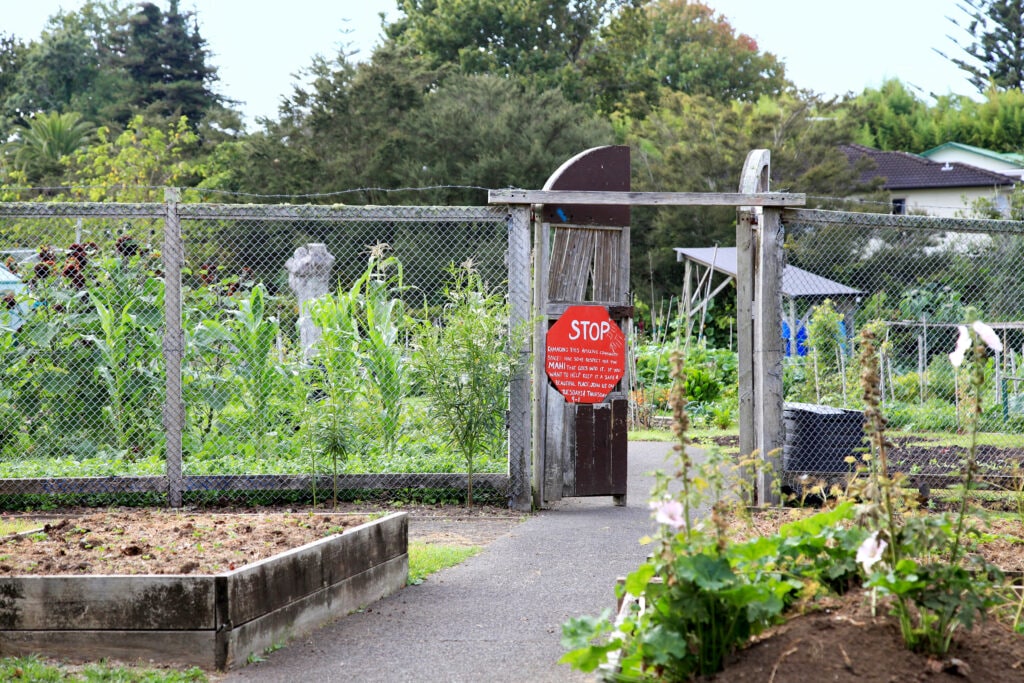
Nineteen years later, locals and passers-by can help themselves to a wide selection of free fruit, such as plums, tiger figs, persimmons and even almonds (if they can figure out how to shell them!).
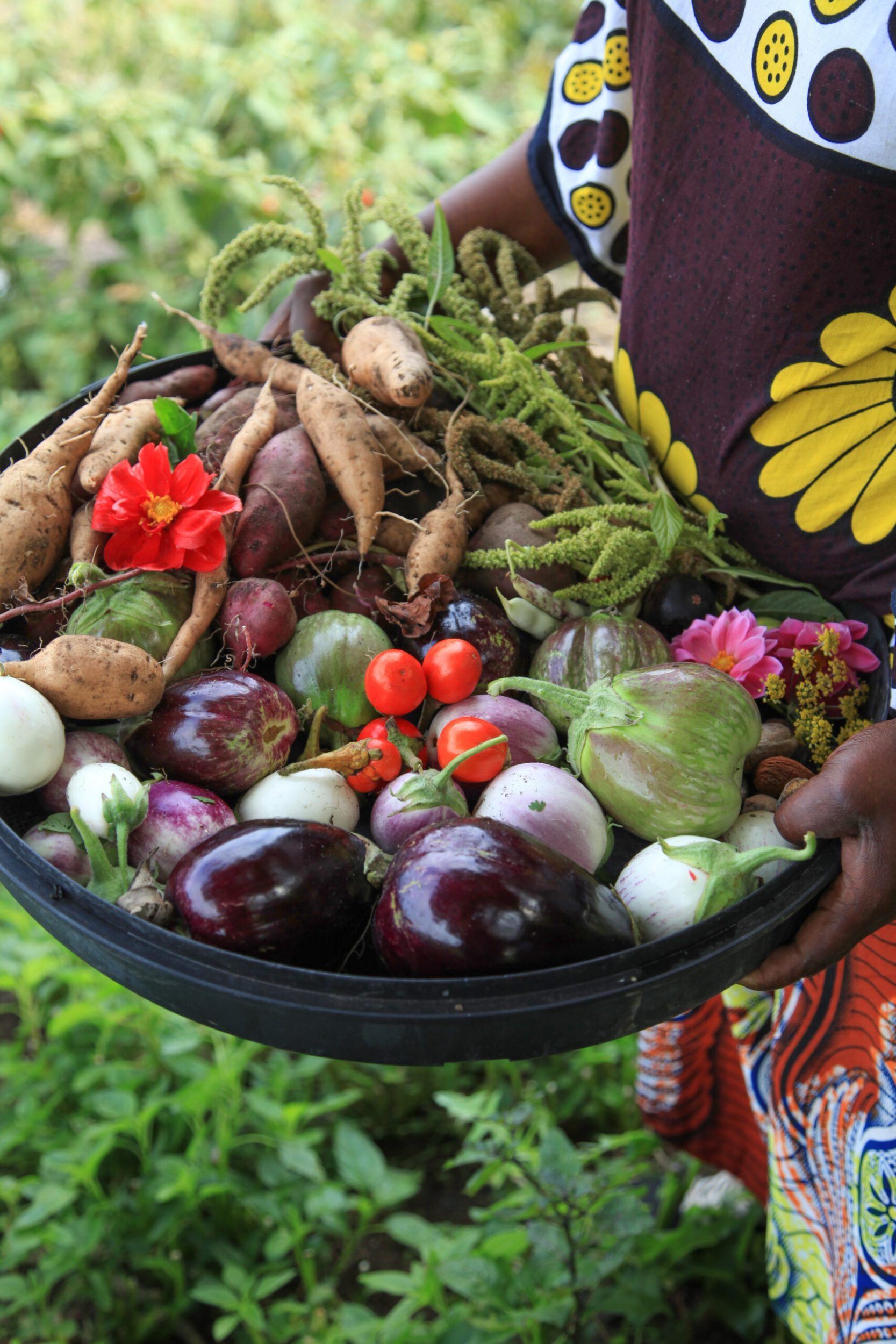
The vegetable plots are enclosed within a fenced area of the garden, and individuals, families and community groups can apply to the Rānui Community Centre, which manages the garden, to lease up to 28sqm of land for $45 per year. They then have free rein to grow whatever edibles they like, provided they follow organic principles, such as not using synthetic pesticides (Lema makes natural pesticide sprays from garlic and chillies).
Ganga is one of the original plot holders. He also grows vegetables at his home just up the road, but because he and his family are vegetarians, having a plot at the community garden allows him to grow more produce for the household. “I like to grow Fijian pumpkin, mustard seeds, bok choy and lauki.” At 86, he does only short bursts in the garden these days, but he says it’s great exercise.
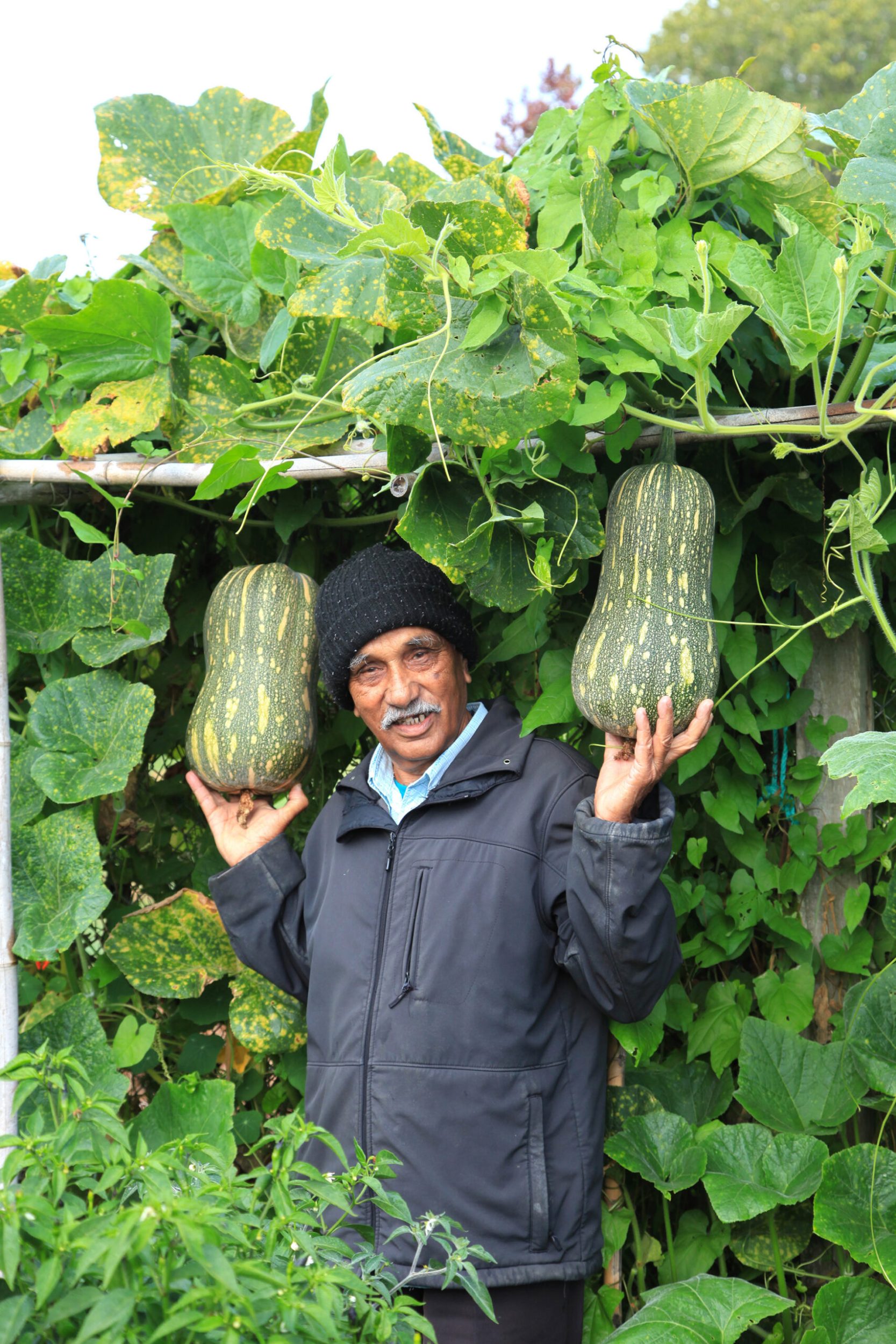
The space also provides novice gardeners with learning opportunities. Lema is currently advising several families, whom she provides with seeds and seedlings. “All the people in the garden are more like family than friends,” she says.
Another part of her role is growing produce for nearby Café Kōrero, a social enterprise run by the community centre that aims to be as organic and sustainable as possible. It offers senior citizens discounted meals, and locals can attend workshops on making chutneys or preserves, using produce from the garden.
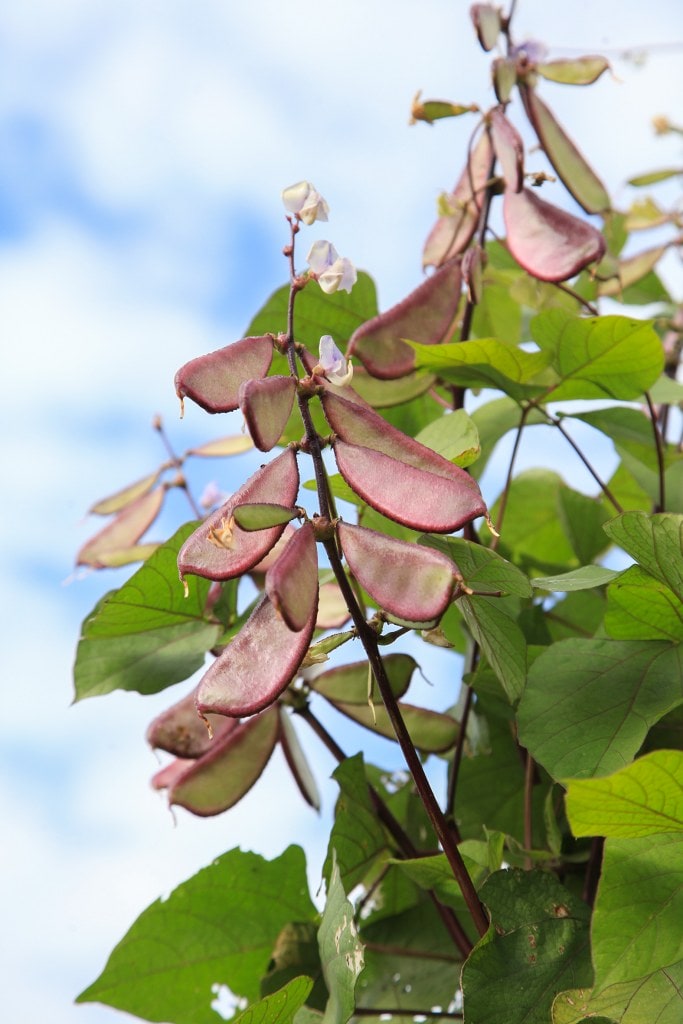
Lema developed her gardening skills as a child working on her family farm back in the DRC.
She and her three children came to Aotearoa as refugees in 2009. She began volunteering at the garden and became friends with the then garden coordinator, who gave her advice about New Zealand growing seasons. One vegetable she misses growing is cassava, a staple in Congolese cooking, but she does grow green Congolese amaranth, among other traditional crops. Other gardeners from DRC and neighbouring African countries are often delighted to discover it at Rānui.
She now helps other refugee women establish gardens at home, via a group called Women of Hope that she established in collaboration with Rānui Action Project. They also help refugee women get driver’s licences, and they run crafting groups.
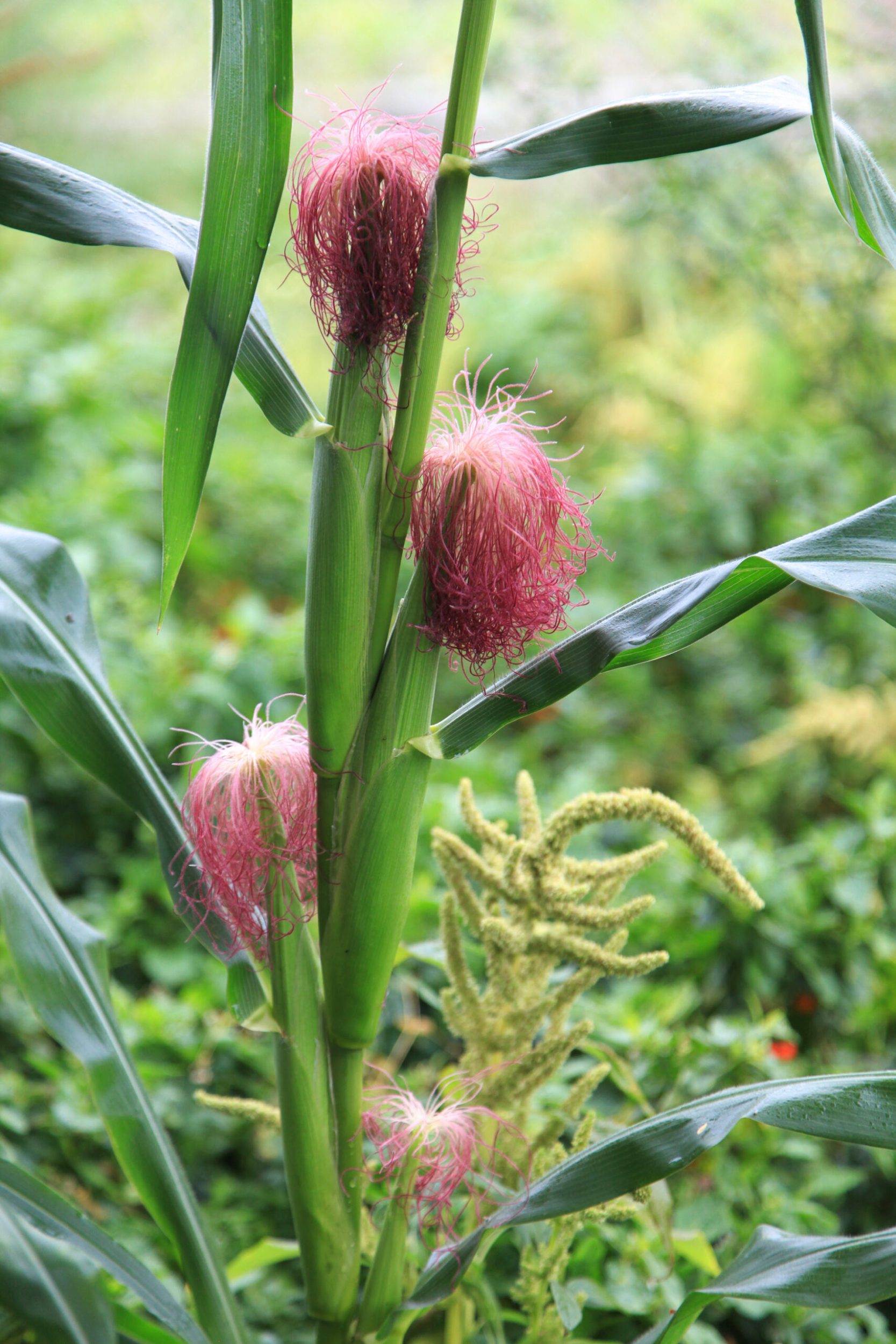
Lema also sells vegetables at Te Puna Market every Saturday, to raise money to educate orphans back in DRC and to purchase items such as sewing machines for refugee women in Uganda, where she was a refugee for five years before coming to New Zealand. Also an artist, she creates embroidered narratives that tell the story of the ongoing conflict in DRC, which is not democratic, she points out, despite its name. “The garden is a good place to share what is happening to women and children in my country.”
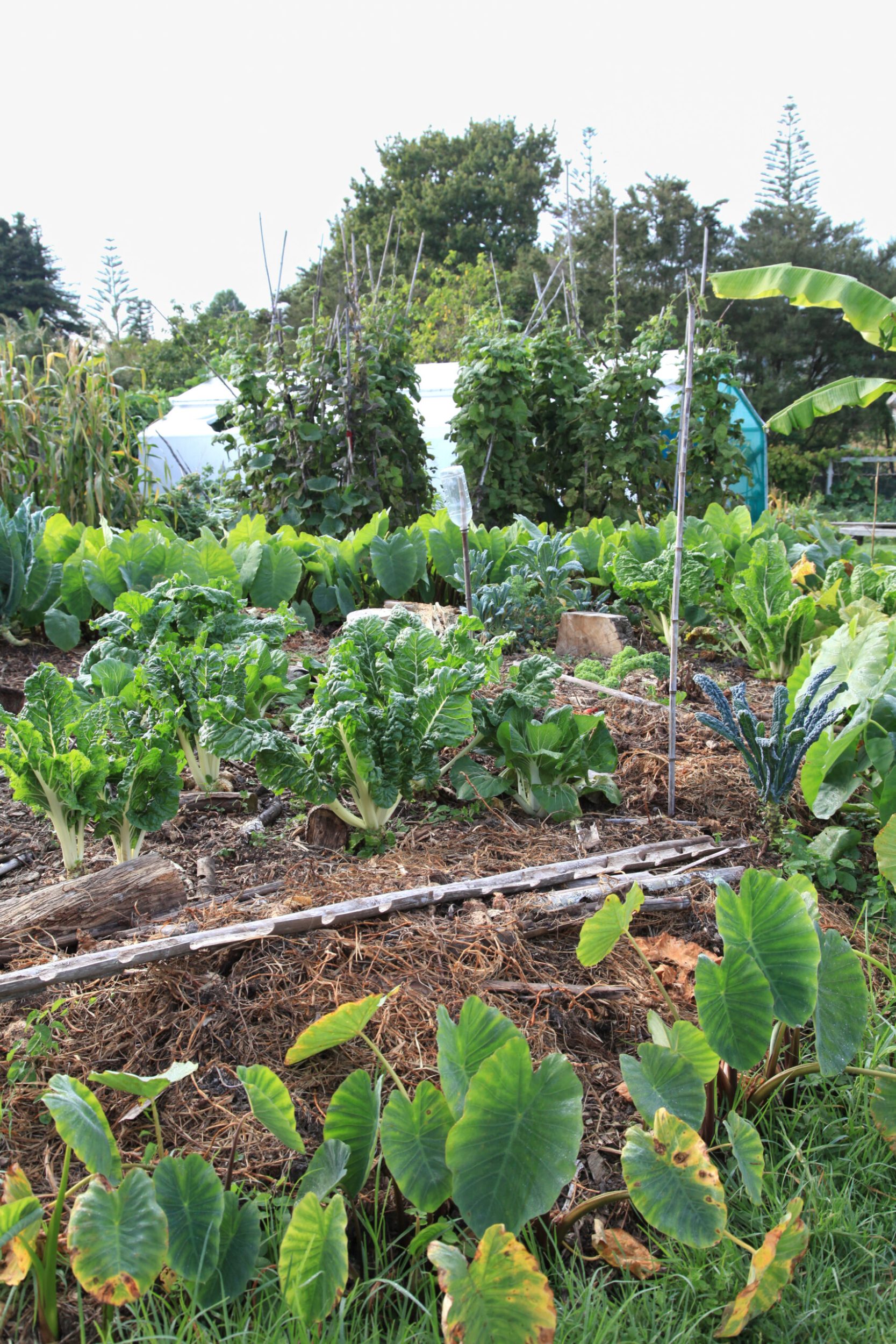
She also sees the benefits gardening has on mental health and nurturing environmental awareness. “When you see green things, you can clear your mind of things that are toxic. It’s therapy for the body and the mind.”
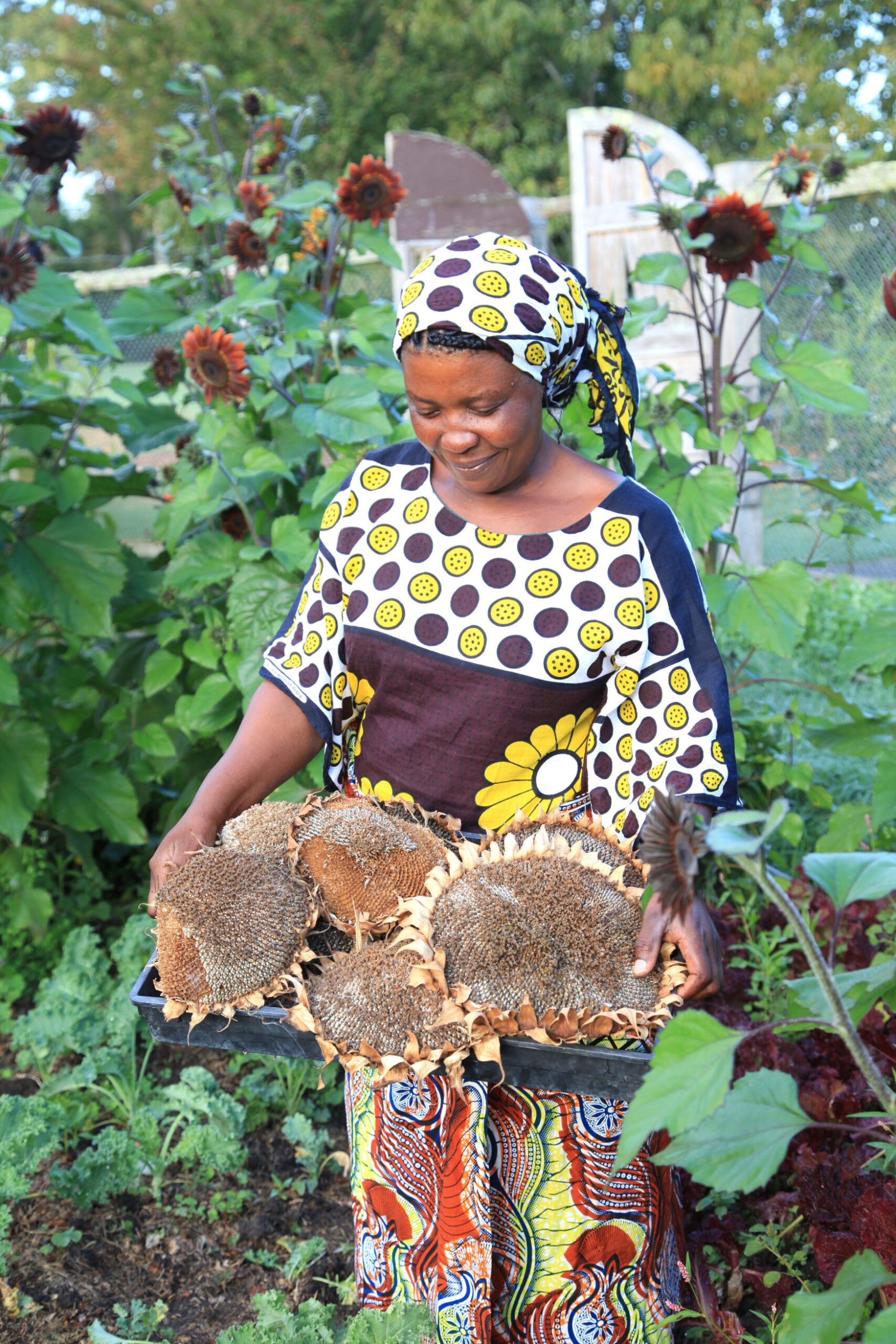
The garden’s sustainable, organic kaupapa means it is home to a healthy native ecosystem (sometimes too healthy, given that Lema’s attempts to grow maize have been repeatedly thwarted by foraging pūkeko). An area of stinging nettles along the fence line is a nursery for yellow admiral caterpillars. On the day we visit, Melody and Jacqui Knight, secretary of the Moths and Butterflies of New Zealand Trust, are collecting caterpillars to rehome elsewhere to boost the declining yellow admiral population.
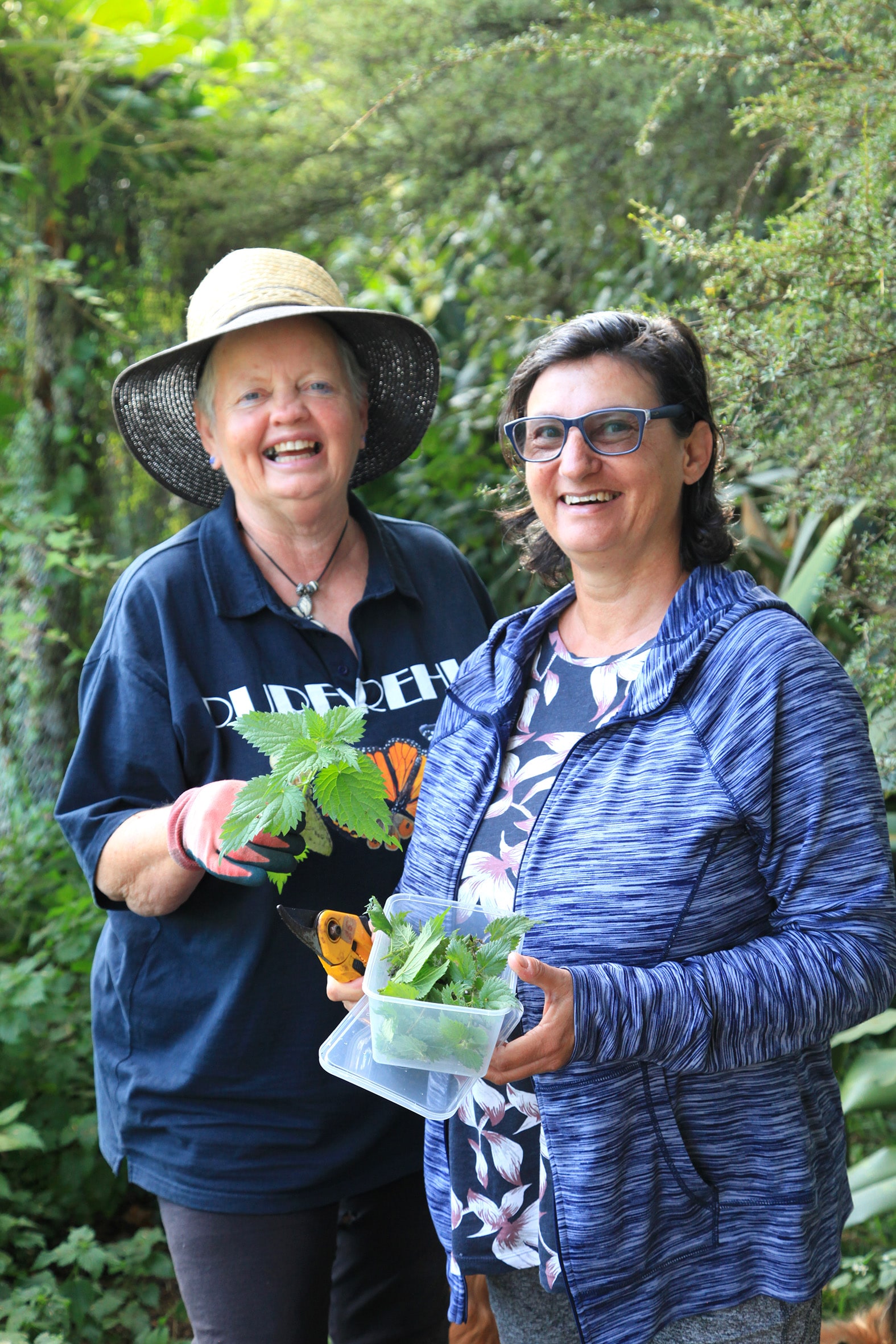
As the garden approaches its 20th anniversary, Melody says she’s thrilled by its success. “It’s just such an easy, safe place to be.”

